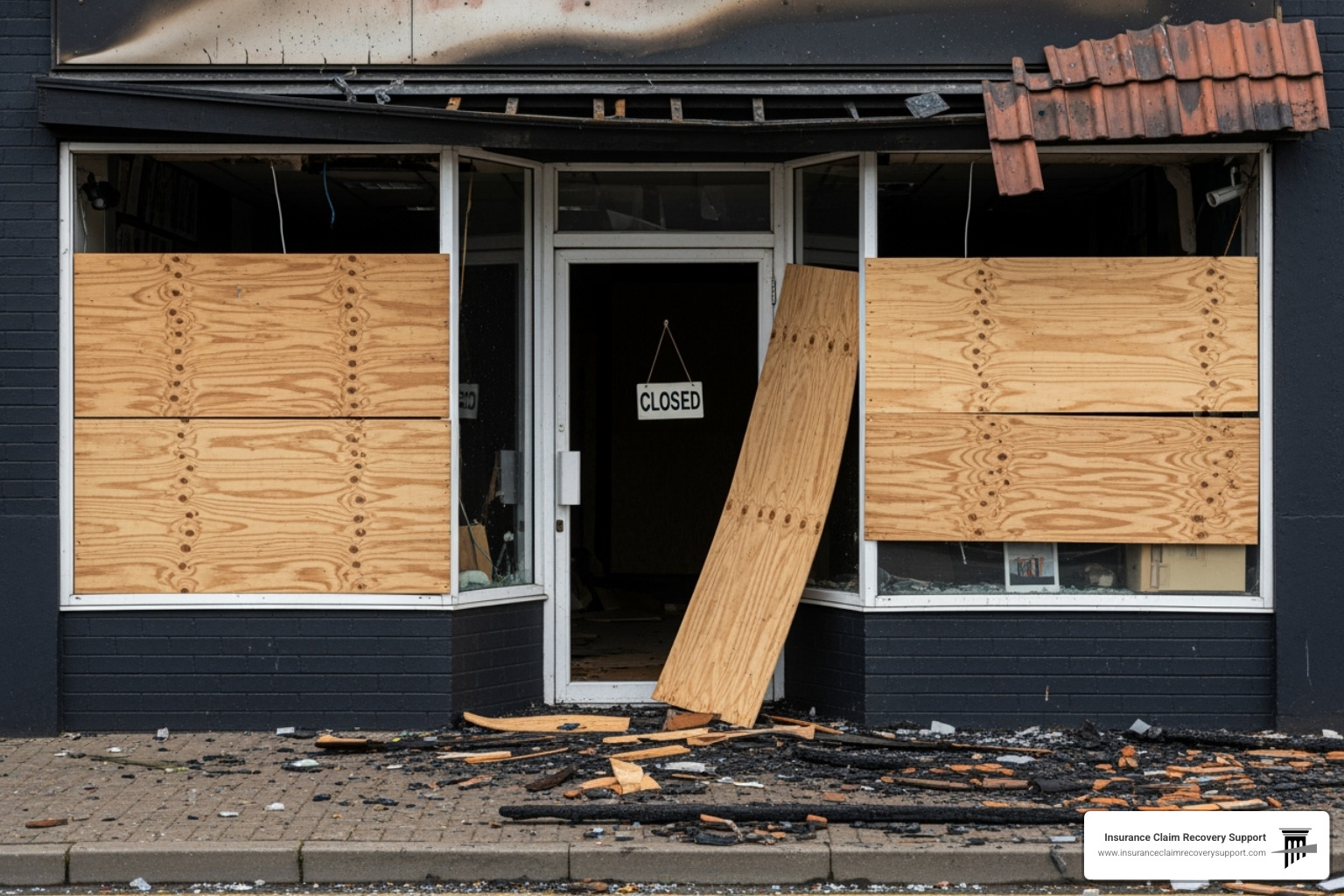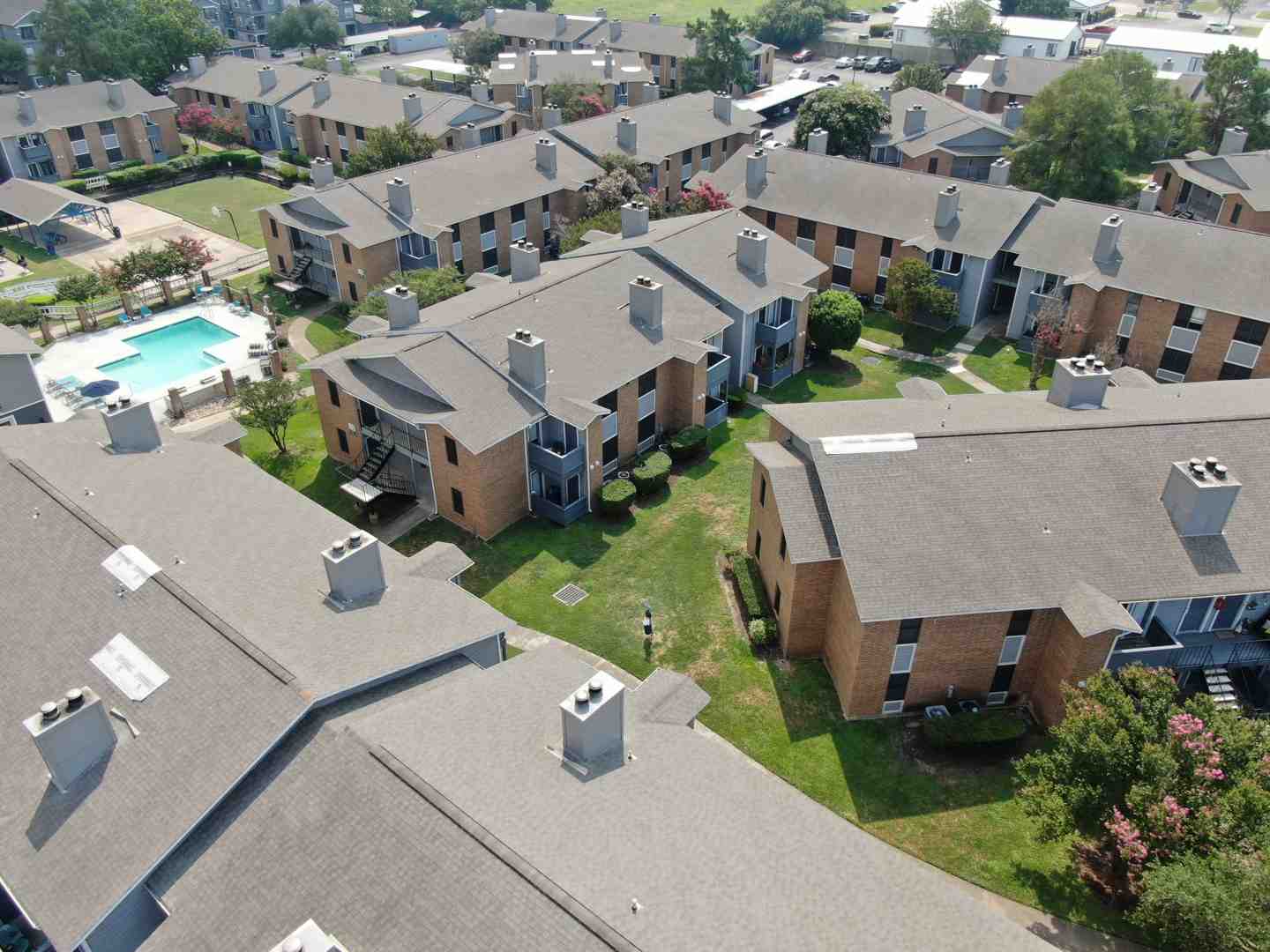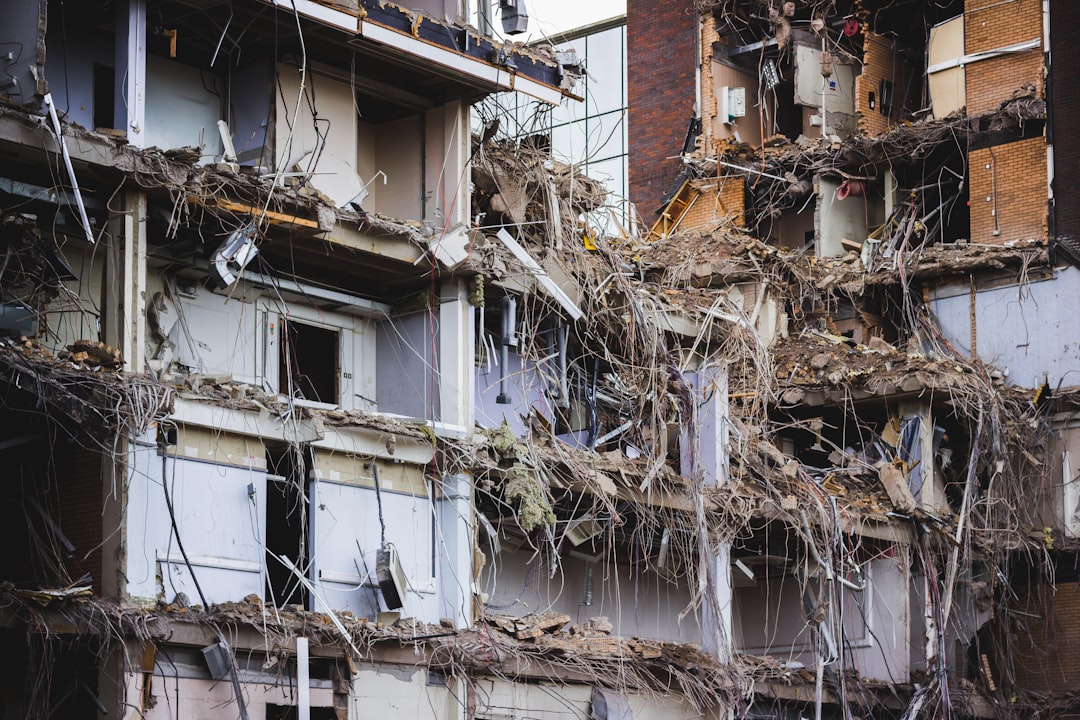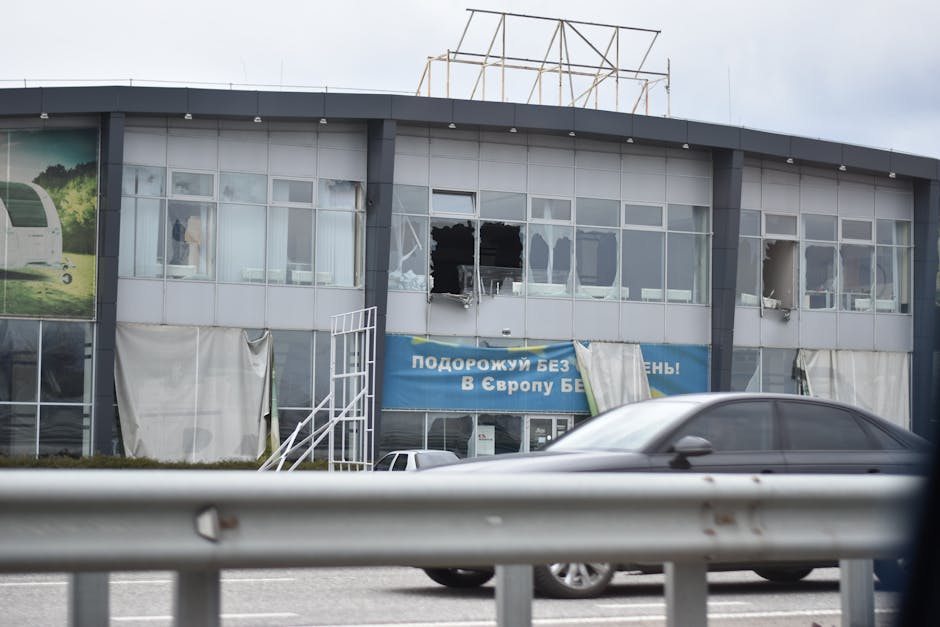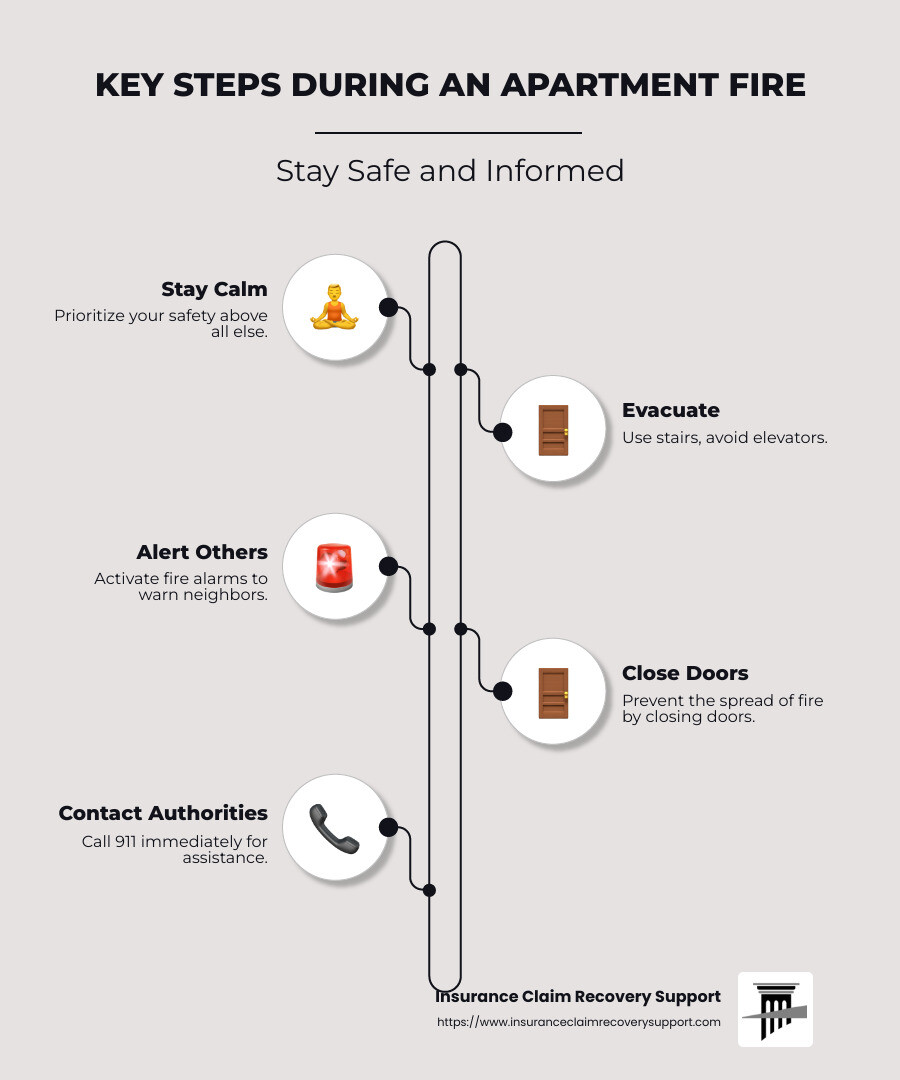
A apartment building fire can turn a place of comfort into a scene of devastation in mere moments. These fires are not just all too common, but they also pose dramatic risks to property and human life alike. Here’s a quick summary to help you understand what to do during such an incident, and the essentials to mitigate its effects:
-
Stay Calm: Always prioritize safety.
-
Evacuate: Use the stairs, not the elevators.
-
Alert Others: Activate the fire alarm to warn neighbors.
-
Close Doors: To inhibit the fire’s spread.
-
Contact Authorities: Call 911 immediately.
-
Stay Informed: Watch for further instructions from fire services.
Understanding an apartment building fire involves knowing the causes and the effective response needed during such incidents. From rapid fire spread due to flammable materials to inadequate safety measures, every detail counts when formulating a plan for prevention and reaction.
As Scott Friedson, a seasoned public adjuster and CEO of a prominent claims support firm, I bring years of experience dealing with apartment building fire insurance claims. Through my work, I’ve secured settlements in several complex cases, ensuring policyholders receive what they rightfully deserve. Keep reading to dig deeper into the essential knowledge about these incidents.
Important apartment building fire terms:
– Apartment and Multifamily Claims
– Austin public insurance adjuster
– Houston property damage claims
Causes of Apartment Building Fires
Understanding what causes an apartment building fire is crucial for prevention and safety. Let’s look at some common triggers:
Flammable Materials
Flammable materials are a major cause of fires in apartment buildings. Items like curtains, furniture, and even certain building materials can catch fire easily. Once ignited, these materials can cause a fire to spread rapidly through a building.
To minimize risks, keep flammable items away from heat sources. Regular inspections and maintenance can also help identify potential hazards before they become a problem.
Lithium-Ion Batteries
Lithium-ion batteries are found in many devices, from smartphones to electric scooters. While convenient, they can be dangerous if not handled properly. Overcharging, physical damage, or exposure to high temperatures can cause these batteries to overheat and catch fire.
A recent incident in NYC highlighted this risk when a lithium-ion battery caused a significant fire in an apartment building. To prevent such incidents, avoid overcharging devices and store batteries in a cool, dry place.
Rapid Spread
The rapid spread of fire is a significant concern in apartment buildings. Modern construction materials, while efficient, can sometimes contribute to this rapid spread. Open floor plans and interconnected spaces can also allow a fire to move quickly from one area to another.
Early detection systems, like smoke alarms and sprinklers, are critical in slowing down a fire’s spread. Regular maintenance of these systems ensures they’re ready to function in an emergency.
In summary, understanding these causes and taking preventive measures can significantly reduce the risk of an apartment building fire. By staying informed and prepared, residents and building managers can help ensure the safety of everyone involved.
Safety Measures and Evacuation Tips
Keeping everyone safe during an apartment building fire involves a combination of effective safety systems and well-practiced evacuation procedures. Here’s how you can prepare:
Fire Alarm Systems
Fire alarms are your first line of defense. They alert residents to danger, giving them precious time to evacuate. Regular checks ensure these systems function properly. Alarms should be loud and visible, with flashing lights for those who might not hear them.
Professionals should inspect these systems often to catch any faults before they become life-threatening. If an alarm goes off, treat it seriously and follow the building’s evacuation plan.
Sprinkler Systems
Sprinklers act as silent guardians, remaining inactive until needed. When a fire is detected, they activate automatically, helping control flames until firefighters arrive.
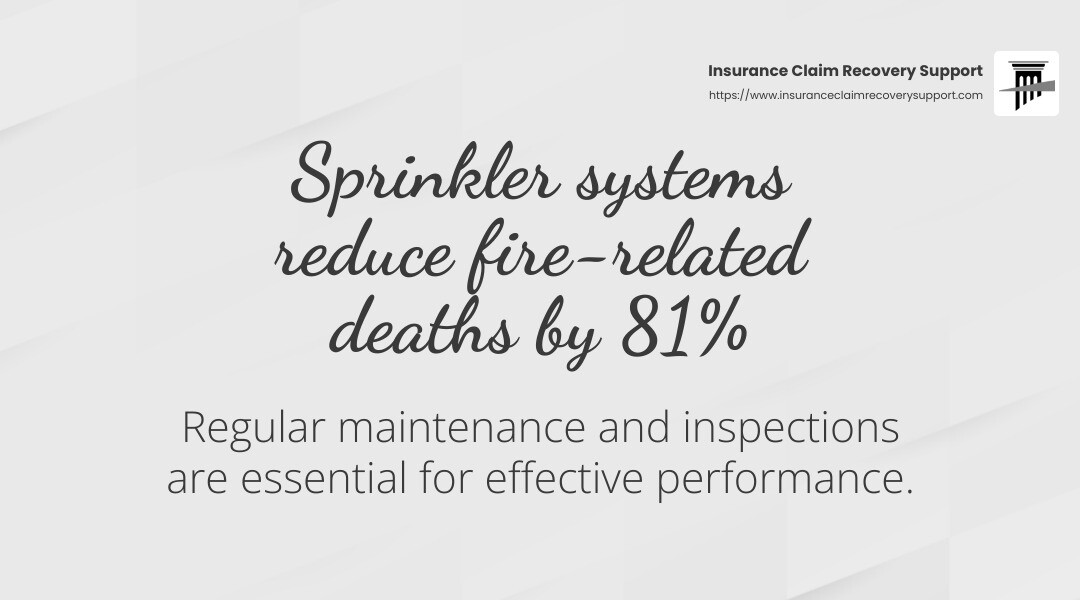
Regular inspections are crucial. Look for signs of damage or leaks. Following NFPA 25 standards ensures that sprinklers are tested and maintained correctly.
Evacuation Procedures
Knowing how to evacuate quickly and safely can save lives. Here are some tips:
- Know the Exits: Familiarize yourself with all available exits, not just the one closest to your apartment.
- Use Stairs, Not Elevators: Elevators can become traps during a fire. Always use the stairs.
- Stay Low: Smoke rises, so staying low can help you avoid inhaling it.
- Yell “Fire!”: Alert others as you evacuate, especially those who might not hear alarms.
- Leave Belongings: Time is of the essence. Focus on getting out safely, not on retrieving items.
Practicing these procedures helps everyone stay calm and act swiftly in an emergency. Building managers should conduct regular fire drills to ensure everyone knows what to do.
These safety measures and evacuation tips are vital for protecting lives during an apartment building fire. By ensuring systems are in place and procedures are well-known, we can minimize the risk and impact of fires.
Next, we’ll explore some recent apartment fire incidents and what they teach us about safety and preparedness.
Recent Apartment Fire Incidents
Recent apartment building fire incidents have highlighted the need for improved safety measures and awareness. Let’s take a look at three significant cases: the Valencia fire, the Lancaster County fire, and the NYC lithium battery fire.
Valencia Fire
In Valencia, a devastating fire broke out in a multi-story apartment complex, affecting dozens of families. The fire spread rapidly due to flammable materials used in the building’s construction. Fortunately, the building’s fire alarm systems alerted residents in time, allowing for a swift evacuation. This incident underscores the importance of regular maintenance and inspection of fire safety systems.
Lancaster County Fire
In Lancaster County, a fire in an apartment building resulted in significant damage. The cause was traced back to a faulty electrical outlet, which ignited nearby flammable materials. Despite the presence of sprinkler systems, the fire caused extensive property damage before it was brought under control. This incident illustrates the need for regular electrical inspections and the use of non-flammable materials in apartment construction.
NYC Lithium Battery Fire
A fire in New York City was sparked by a lithium-ion battery from an e-bike, which was being charged in an apartment. The battery overheated and exploded, causing a fire that quickly spread through the building. This incident highlights the risks associated with lithium-ion batteries and the need for careful handling and storage. Residents should charge these devices in well-ventilated areas and avoid overcharging to prevent similar incidents.
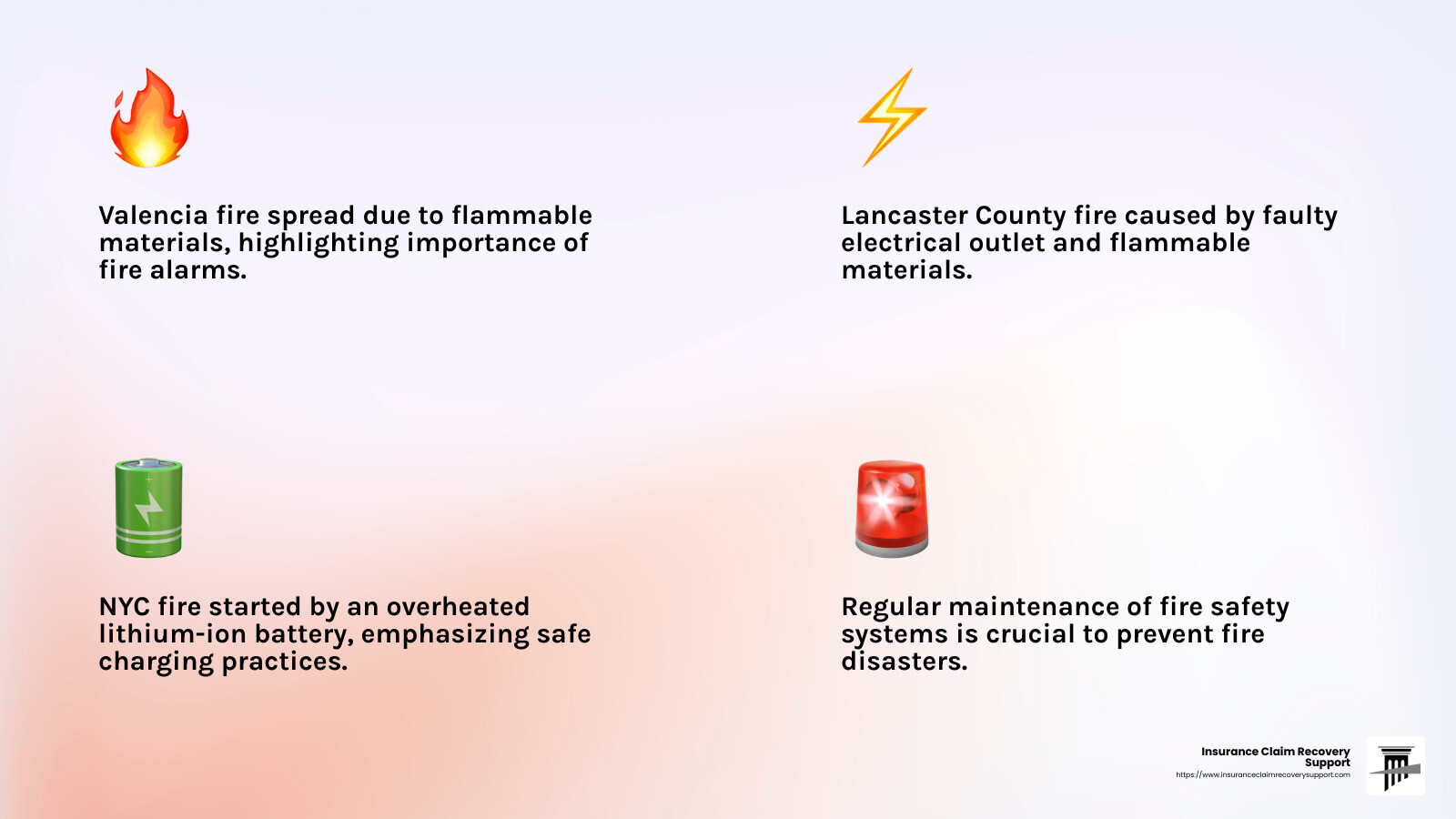
These incidents serve as stark reminders of the potential dangers in apartment building fires. By learning from these events, we can better prepare and protect our communities. In the next section, we’ll address some frequently asked questions about apartment building fires to further improve safety and preparedness.
Frequently Asked Questions about Apartment Building Fires
How do you survive a high-rise apartment fire?
Surviving a high-rise apartment fire requires quick thinking and a calm approach. Here are some essential tips:
-
Stay Inside: If smoke or fire is blocking your exit, stay inside your apartment. Close all doors to slow the spread of smoke and flames.
-
Seal Gaps: Use wet towels or duct tape to seal gaps around doors. This helps keep smoke out.
-
Non-Flammable Materials: Cover vents and door cracks with non-flammable materials if possible. This can provide extra protection against smoke infiltration.
-
Call for Help: Dial emergency services and inform them of your exact location. Stay by a window where rescuers can see you.
How do you stop a fire alarm in an apartment building?
Sometimes, a fire alarm might go off accidentally. Here’s what you can do:
-
Hush Button: Many modern alarms have a “hush button” feature. This can temporarily silence the alarm, allowing you to address the cause without disabling the system.
-
Silencing System: If the alarm continues, check if your building has a centralized silencing system. This should only be used by authorized personnel after confirming there is no fire.
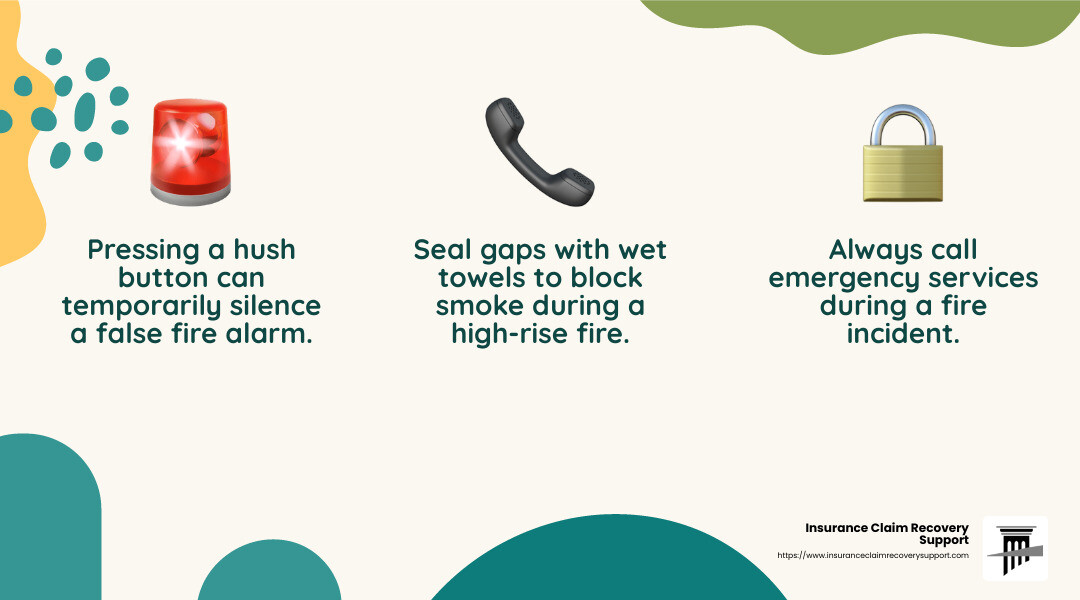
What to do if there is a fire in the building?
If you find a fire in your building, act quickly:
-
Yell “Fire!”: Alert others by shouting “Fire!” as you evacuate. This can save precious time for everyone.
-
Use Stairs: Never use elevators during a fire. Always take the stairs, as elevators can malfunction or become smoke-filled traps.
-
Leave Belongings: Prioritize your safety over possessions. Leave your belongings behind to ensure a swift exit.
-
Close Doors: As you leave, close doors behind you. This can help contain the fire and reduce its spread.
Knowing these steps can significantly improve your chances of staying safe during an apartment building fire. In the next section, we’ll explore how Insurance Claim Recovery Support can advocate for policyholders to ensure they receive the maximum settlement following fire incidents.
Conclusion
In the aftermath of an apartment building fire, navigating the insurance claim process can be overwhelming. This is where we at Insurance Claim Recovery Support LLC come in. Our mission is to stand by policyholders, ensuring they receive the compensation they deserve.
Advocating for Policyholders
We know that dealing with insurance companies can be daunting. Our team is dedicated to being your advocate, ensuring that your voice is heard. We specialize in understanding the complexities of fire claims, and our expertise allows us to effectively steer the insurance process on your behalf.
Maximizing Settlements
Our goal is not just to settle claims, but to maximize them. We carefully document damages, both visible and hidden, and review your insurance policy thoroughly. This ensures that you receive the full compensation you are entitled to. Our commitment to securing rightful settlements for our clients is backed by a strong track record of success.
Why Choose Us?
-
Expertise: We have extensive experience dealing with large and complex claims, particularly in areas prone to fire and storm damage like Austin, Dallas, and Houston.
-
No Recovery, No Fee: Our services are offered on a contingency basis, meaning you pay nothing unless we recover money for you.
-
Nationwide Service: Although based in Texas, we serve clients across the country, including in Colorado, Oklahoma, and Florida.
In conclusion, when facing the challenges of an apartment building fire, having a dedicated advocate by your side can make all the difference. Let us help you secure the settlement you deserve, ensuring a smoother recovery process. Reach out to us for a free claim evaluation and find how we can support you in this critical time.

